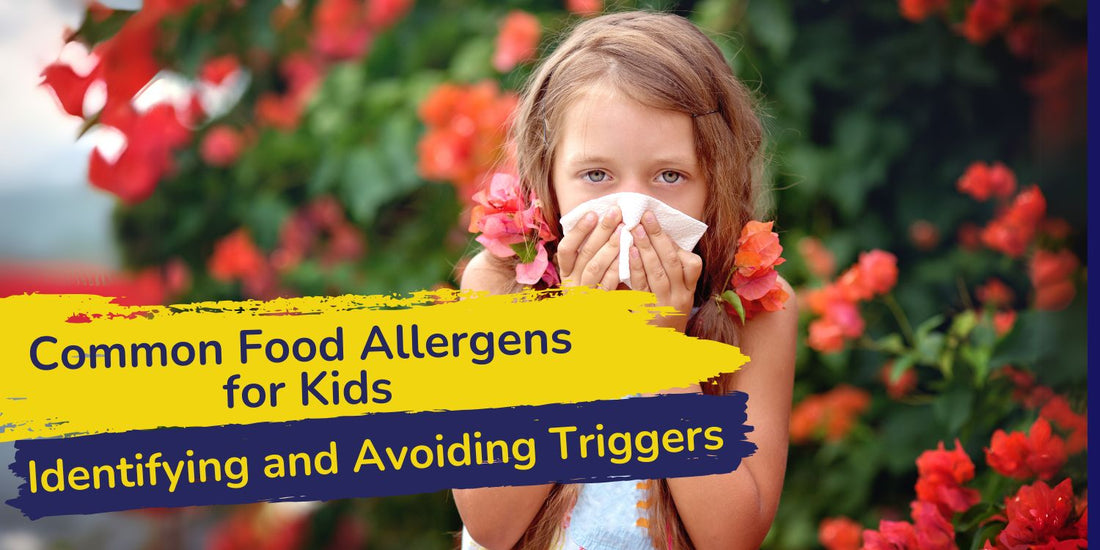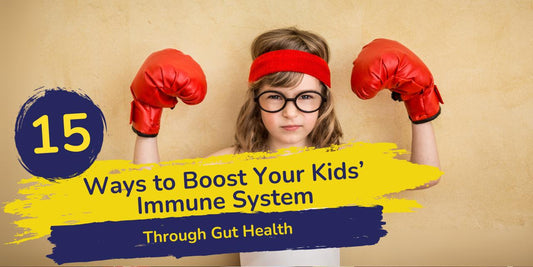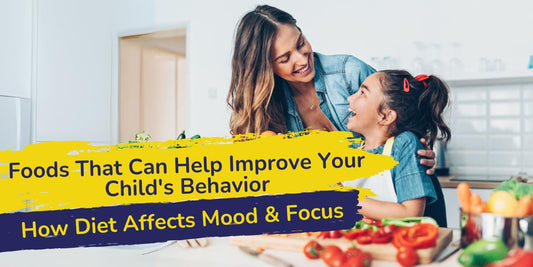
Common Food Allergens for Kids: Identifying and Avoiding Triggers
Food allergies in children have become increasingly common over the past few decades. For many families, navigating childhood allergies is more than just reading food labels—it’s about staying vigilant every day. A food allergy occurs when the immune system overreacts to a harmless substance in food, treating it as a threat and triggering a range of symptoms. These reactions can range from mild discomfort to life-threatening emergencies.
Early identification and management of food allergies are crucial.
Catching an allergy early can prevent serious reactions, improve a child’s quality of life, and give caregivers the tools they need to handle allergic episodes with confidence. But before diving into the specifics of common allergens, it’s important to understand how food allergies differ from food intolerances.
Food Allergies vs. Food Intolerances: Understanding the Difference
| Aspect | Food Allergy | Food Intolerance |
|---|---|---|
| Immune System vs. Digestive System | Triggers an immune response, where the body attacks the allergen. | Involves difficulty digesting certain foods; no immune system involvement. |
| Severity of Reactions | Can cause life-threatening reactions like anaphylaxis. | Causes discomfort but is not life-threatening. |
| Speed of Reaction | Symptoms usually appear within minutes to a few hours. | Symptoms may take hours or days to develop. |
| Common Symptoms | Hives, swelling, difficulty breathing, vomiting, dizziness, anaphylaxis. | Bloating, gas, diarrhea, cramps, headaches. |
| Amount of Food Needed to Trigger Symptoms | Even a trace amount can trigger a severe response. | Often depends on the quantity; small amounts might not cause a reaction. |
| Common Triggers | Peanuts, tree nuts, milk, eggs, soy, wheat, fish, shellfish. | Lactose, gluten, caffeine, artificial additives like MSG. |
| Diagnosis and Testing | Diagnosed using skin prick tests, blood tests, or food challenges. | Diagnosed via elimination diets or breath tests (e.g., lactose test). |
| Treatment and Management | Requires strict avoidance and emergency meds like epinephrine. | Managed by avoiding trigger foods, adjusting portions, or using digestive aids. |
Top Food Allergens in Children and Where They Often Hide
For children with food allergies, even the tiniest trace of an allergen can trigger a reaction. What makes food allergies especially challenging is that allergens often lurk in unexpected places—hidden within processed foods, snacks, and even non-food products. Below are some of the most common allergens affecting children, along with surprising sources where they can quietly hide:
1. Milk & Dairy Products

Dairy is one of the most widespread allergens among children, and it’s not just found in a glass of milk. Cheese, butter, yogurt, cream, and even items like bread, crackers, and baked goods may contain milk proteins or derivatives like casein and whey. Some margarine, deli meats, and processed foods also use dairy as a hidden ingredient, making label-checking essential.
2. Eggs

Eggs are a staple in many baked and cooked items—appearing in cakes, muffins, pancakes, and waffles. They’re also found in mayonnaise, salad dressings, and some kinds of pasta. Because eggs are often used as a binding or leavening agent, they can sneak into foods you wouldn’t expect, including meatballs or breaded dishes.
3. Peanuts

A leading cause of severe allergic reactions in children, peanuts are common in peanut butter and candy bars but also show up in less obvious places like sauces (such as satay or mole), baked goods, and snack foods. Even peanut oil or peanut flour used in processed foods can pose a risk.
4. Tree Nuts

These include almonds, walnuts, pecans, cashews, pistachios, and hazelnuts. You’ll find them in nut butters, cereals, granola, snack bars, cookies, and desserts. Some lotions, shampoos, and cooking oils may also contain tree nut derivatives, so it’s important to read both food and product labels carefully.
5. Soy

Soy is a common allergen and can be tricky to avoid due to its widespread use in processed foods. It’s present in soy milk, tofu, tempeh, and edamame, but also in baked goods, frozen meals, sauces, dressings, and even canned tuna. Products labeled as “vegetable protein” often contain soy.
6. Wheat & Gluten

Found in bread, pasta, cookies, cereals, and nearly all baked goods, wheat is one of the most prevalent ingredients in children’s foods. Even items like soy sauce, soups, and seasonings can contain wheat or gluten-based thickeners, making it a difficult allergen to avoid without strict label-reading.
7. Fish & Shellfish

Allergies to fish (like salmon, tuna, or cod) and shellfish (like shrimp, crab, and lobster) often emerge later in childhood, but they can be severe. These allergens can be found in seafood dishes, Asian cuisine, sauces, soups, and sometimes in unexpected products like Worcestershire sauce or Caesar dressing.
8. Sesame

Once considered rare, sesame allergies are on the rise. Sesame seeds and sesame oil are found in baked goods like hamburger buns, crackers, tahini (sesame paste), hummus, and spice blends. Even trace amounts can cause reactions, especially when sesame is used as a garnish or hidden in seasoning.
9. Corn

Corn is not just in the form of corn on the cob—it’s a hidden ingredient in many foods. Corn syrup, cornmeal, corn starch, and dextrose (a sugar derived from corn) are found in everything from candies and soft drinks to sauces and cereals. Even non-food items like vitamins and toothpaste can contain corn-based ingredients.
10. Gelatin

Gelatin is made from animal collagen and is commonly found in gummy candies, marshmallows, Jell-O, and even some yogurts and desserts. It’s often used as a thickener or stabilizer, so it might also appear in processed meats or medicine capsules.
11. Artificial Food Dyes

Brightly colored foods are often a red flag. Artificial dyes like Red 40, Yellow 5, and Blue 1 are found in candy, sodas, fruit-flavored snacks, breakfast cereals, and even vitamins. These dyes can trigger allergic-like reactions or behavioral changes in some sensitive children.
12. Coconut
Though technically a fruit and not a true tree nut, coconut can still cause allergic reactions in some children. It’s frequently used in desserts, baked goods, dairy alternatives, and tropical drinks. Beyond food, it’s also found in personal care items like lotions, soaps, and shampoos.
13. Mustard
A lesser-known but potent allergen, mustard can trigger severe reactions. It’s often hidden in condiments, spice blends, marinades, salad dressings, and pre-seasoned foods. Mustard allergy is especially common in parts of Europe but is increasingly seen elsewhere as well.
Symptoms of Food Allergies in Children
Food allergy symptoms can vary widely in severity, from mild discomfort to life-threatening reactions. Here’s what to look for:
Mild Reactions
• Runny or stuffy nose
• Mild stomach cramps
• Fatigue or a general feeling of weakness
• Slight swelling around the eyes or lips
Moderate Reactions
• Nausea or vomiting
• Difficulty swallowing
• Rapid heartbeat
• Pale or flushed skin
Severe Reactions (Anaphylaxis)
• Tightness in the chest or throat
• Hoarseness or difficulty speaking
• A feeling of panic or dread
• Drop in oxygen levels, which may lead to fainting or loss of consciousness
Ways to Identify Food Allergies in Children
Pinpointing the source of an allergic reaction can be challenging but essential. Here are effective methods for identification:
• At-Home Elimination Trials: Remove and slowly reintroduce suspected foods to observe changes.
• Parental and Family History: Allergies often run in families, so history matters.
• Patch Testing: A skin-based test to check for delayed allergic reactions.
• Trial of Hypoallergenic Formula: Especially useful for infants with suspected milk allergies.
• Monitoring Behavioral Changes: Watch for irritability, mood swings, or hyperactivity after meals.
• Testing for Food-Associated Conditions: Such as eczema or asthma that worsen after eating certain foods.
• Controlled Exposure: Under medical supervision, introduce small amounts of allergens to monitor for reactions.
Managing and Preventing Food Allergic Reactions
Once a child is diagnosed with a food allergy, prevention becomes the foundation of daily life. Even tiny traces of an allergen can cause reactions, so staying vigilant and prepared is essential. The goal is not only to avoid exposure but also to respond quickly and confidently if an allergic reaction occurs. Here's how parents, caregivers, and educators can work together to protect allergic children:
• Create an Emergency Action Plan
Think of this as your allergy game plan. It outlines what to do at the very first sign of a reaction—whether it’s hives, difficulty breathing, or swelling. This plan should include the child's name, allergens, symptoms to watch for, medications to use (like epinephrine or antihistamines), and emergency contact numbers. Share it with everyone who interacts with the child regularly: babysitters, teachers, coaches, and even grandparents.
• Educate Schools and Caregivers
Don’t assume others understand the seriousness of food allergies. Clearly explain what your child is allergic to, what symptoms to look for, and how to respond. Provide printed information, walk them through how to use an epinephrine auto-injector, and stress the importance of avoiding cross-contact. Open communication builds confidence and ensures your child’s safety even when you're not around.
• Use Medical Identification
A medical alert bracelet or necklace is a simple but powerful tool. In an emergency, it tells first responders and bystanders about the child’s allergies if they’re unable to speak. It should list the allergens and say something like “Epinephrine required.” These IDs are especially useful for children who are active, independent, or too young to explain their condition.
• Introduce New Foods Slowly and Mindfully
When starting a new food—especially in babies or toddlers—go slow. Introduce only one new food at a time, and wait a few days before trying another. This helps you pinpoint the culprit if any symptoms appear. Avoid mixing new foods together during this phase, and always observe your child for signs of a reaction.
•Clean Surfaces and Hands Regularly
Cross-contamination is sneaky. Allergens can linger on kitchen counters, lunchboxes, and even toys. Thoroughly wash hands before and after meals, and clean utensils, cutting boards, and surfaces with soap and water. When dining out, wipe down tables and chairs before your child sits.
• Pack Safe Snacks and Meals
Whether it’s a school lunch, a birthday party, or a family road trip, bringing allergy-safe food from home eliminates guesswork. Pack familiar, trusted snacks in labeled containers, and avoid shared dishes or buffets. Having a backup snack or meal on hand also helps in case no safe options are available at your destination.
• Always Carry Emergency Medication
Children with food allergies should never leave home without their emergency medications—typically an epinephrine auto-injector and sometimes an antihistamine. Keep them in a clearly labeled pouch and ensure they’re not expired. If the child is old enough, teach them (and their siblings) how to recognize symptoms and how to use the medication. Many families keep extra doses at school or daycare for quick access.
Conclusion
Food allergies in children require constant care and attention, but with the right tools, knowledge, and support, they are entirely manageable. Early detection, informed planning, and creating allergy-safe environments allow children to grow, explore, and enjoy life with confidence and safety.






